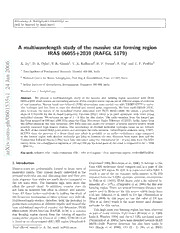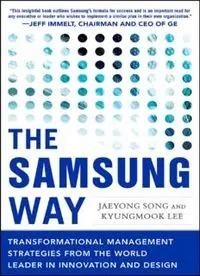
The Samsung way : transformational management strategies from the world leader in innovation PDF
Preview The Samsung way : transformational management strategies from the world leader in innovation
Copyright © 2014 by McGraw-Hill Education. All rights reserved. Except as permitted under the United States Copyright Act of 1976, no part of this publication may be reproduced or distributed in any form or by any means, or stored in a database or retrieval system, without the prior written permission of the publisher. ISBN: 978-0-07183580-0 MHID: 0-07-1835806 The material in this eBook also appears in the print version of this title: ISBN: 978-0-07-183579-4, MHID: 0-07-183579-2. eBook conversion by codeMantra Version 1.0 All trademarks are trademarks of their respective owners. Rather than put a trademark symbol after every occurrence of a trademarked name, we use names in an editorial fashion only, and to the benefit of the trademark owner, with no intention of infringement of the trademark. Where such designations appear in this book, they have been printed with initial caps. McGraw-Hill Education eBooks are available at special quantity discounts to use as premiums and sales promotions, or for use in corporate training programs. To contact a representative please visit the Contact Us page at www.mhprofessional.com. TERMS OF USE This is a copyrighted work and McGraw-Hill Education and its licensors reserve all rights in and to the work. Use of this work is subject to these terms. Except as permitted under the Copyright Act of 1976 and the right to store and retrieve one copy of the work, you may not decompile, disassemble, reverse engineer, reproduce, modify, create derivative works based upon, transmit, distribute, disseminate, sell, publish or sublicense the work or any part of it without McGraw-Hill Education’s prior consent. You may use the work for your own noncommercial and personal use; any other use of the work is strictly prohibited. Your right to use the work may be terminated if you fail to comply with these terms. THE WORK IS PROVIDED “AS IS.” McGRAW-HILL EDUCATION AND ITS LICENSORS MAKE NO GUARANTEES OR WARRANTIES AS TO THE ACCURACY, ADEQUACY OR COMPLETENESS OF OR RESULTS TO BE OBTAINED FROM USING THE WORK, INCLUDING ANY INFORMATION THAT CAN BE ACCESSED THROUGH THE WORK VIA HYPERLINK OR OTHERWISE, AND EXPRESSLY DISCLAIM ANY WARRANTY, EXPRESS OR IMPLIED, INCLUDING BUT NOT LIMITED TO IMPLIED WARRANTIES OF MERCHANTABILITY OR FITNESS FOR A PARTICULAR PURPOSE. McGraw-Hill Education and its licensors do not warrant or guarantee that the functions contained in the work will meet your requirements or that its operation will be uninterrupted or error free. Neither McGraw-Hill Education nor its licensors shall be liable to you or anyone else for any inaccuracy, error or omission, regardless of cause, in the work or for any damages resulting therefrom. McGraw-Hill Education has no responsibility for the content of any information accessed through the work. Under no circumstances shall McGraw-Hill Education and/or its licensors be liable for any indirect, incidental, special, punitive, consequential or similar damages that result from the use of or inability to use the work, even if any of them has been advised of the possibility of such damages. This limitation of liability shall apply to any claim or cause whatsoever whether such claim or cause arises in contract, tort or otherwise. CONTENTS Preface Acknowledgments PART ONE TWENTY YEARS TO THE TOP Chapter 1 Why the Samsung Way? Chapter 2 How Did Samsung Become a World-Class Corporation? PART TWO EVOLUTION OF THE SAMSUNG WAY Chapter 3 Leadership and Governance The Core of the Samsung Way Chapter 4 The Evolution of Samsung’s Management System PART THREE HOW DID SAMSUNG SUCCEED? Chapter 5 Samsung’s First Success Factor Competency in Creation of Speed Chapter 6 Samsung’s Second Success Factor Synergy Through Convergence Chapter 7 Samsung’s Third Success Factor Evolutionary Innovation PART FOUR SAMSUNG-STYLE PARADOX MANAGEMENT AND THE FUTURE OF THE SAMSUNG WAY Chapter 8 Internal Co-opetition and Paradox Management Chapter 9 The Future of the Samsung Way Notes Index PREFACE In the early 1990s, Samsung Group’s products were at the top of many industries in Korea, but they were in the second or third tier in global markets. By then, the effects of major changes at home and abroad were seriously affecting the conglomerate. Democratization in the 1980s had ignited a labor movement that had led to soaring wages and the end of Korea’s run as a low-cost production base. Moreover, Japanese manufacturers, Samsung’s main rivals, had moved offshore to avoid the sharp appreciation in the yen that followed the 1985 Plaza Agreement. When their leading technology and brands in electronics were combined with low labor costs in Southeast Asia and China, Samsung’s struggles in global markets were clearly visible. Finally, forecasts that the electronics industry would shift from analog to digital technology in the twenty- first century were amplifying long-term concerns. In response to these major changes resulting from democratization, globalization, and digitization, Samsung Chairman Lee Kun-Hee unveiled his New Management initiative in 1993. The strategic blueprint completely transformed Samsung, allowing it to overcome the threat of competition and pave the way for its taking advantage of new opportunities. It included the lofty goal of improving Samsung’s products and services to the point of excellence and making Samsung one of the leading global companies of the twenty-first century. In the days of analog, Samsung had lagged behind Japanese electronics companies, but Chairman Lee dreamed of Samsung’s outdoing them in the digital age through aggressive, preemptive investments. The effort to achieve these audacious goals was summed up in Chairman Lee’s directive to his senior executives: “Change everything except your wife and children.” Now, 20 years later, Samsung is one of the world’s leading companies, holding the number one spot in key electronics businesses like mobile phones, televisions, memory chips, display panels, and rechargeable batteries. All elements of the company’s operations, including corporate strategy, management systems, and core competencies, were realigned in accordance with the goals of the New Management initiative. As a result, Samsung now occupies the leading position in the global electronics industry. The company’s transformation over the past 20 years and its rise to the forefront of the global corporate stage has set a compelling precedent for both Korean and foreign companies. While a number of books have been written about Samsung’s rise to the top and Chairman Lee Kun-Hee’s role in its transformation, most of these books were written for the entertainment of the general public. Professional analysis and applications of theory from a management scholar’s perspective on Samsung’s strategy and its main strengths have been lacking. Moreover, several scholarly books on the subject lack in-depth, systematic analysis. Data about Samsung have also been difficult to acquire, and access to interviews has been challenging; thus, newspaper articles and publicly available data have often been the only materials available to management scholars. As a result, both foreign and Korean managers who wish to understand and benchmark Samsung’s management system for their own companies have been unable to find information to aid them in their endeavors. Under these circumstances, we have had the good fortune to be asked by the Samsung Economic Research Institute (SERI), a think tank of the Samsung Group, to conduct in-depth research into the sources of Samsung’s competitiveness and to learn about its future plans. With SERI’s cooperation, since 2004, we have interviewed more than 80 of Samsung’s key executives, including CEOs, with most of them coming from Samsung Electronics. SERI also provided data about Samsung for examination and analysis. From 2008 to 2011, while serving as Samsung’s academic advisors, we obtained a wide variety of information about the company. In 2011, as a result of this research, we published an article in the Harvard Business Review (HBR), in collaboration with Professor Tarun Khanna at Harvard Business School, on the factors influencing Samsung’s success. This was the first case analysis of a Korean company to be published in HBR. Overall, during the past 10 years, beginning in 2004, in the process of conducting research and analysis, we have broadened our understanding of Samsung as a company, serving as academic advisors, educating executives, and writing research papers and case studies. This book is the result of 10 years of careful research, during which the authors focused on Samsung’s transformation and takeoff during the past 20 years since the New Management initiative. Among Samsung’s many subsidiaries, we concentrated our efforts on the company’s world-class electronics subsidiaries, particularly Samsung Electronics. This book presents Samsung’s three major management paradoxes, along with an in-depth analysis of Samsung’s distinctive competencies, and particularly the management system that Samsung built in the process of resolving these paradoxes and developing the Samsung Way. A broad picture of Samsung’s future tasks is also included. We believe that this book will be helpful for executives and employees who want to understand and benchmark Samsung’s management system and its rise to the top. In particular, both corporations in advanced countries and latecomers in developing nations that want to catch up with front-runners can learn from Samsung’s example. In addition, our analysis of Samsung’s paradox management strategies and systems will provide many points of learning for management scholars and students. We also believe that employees at Samsung, especially foreign employees, can understand or reevaluate Samsung’s transformation, core competencies, key success factors, and management systems and mechanisms since the New Management initiative by reading this book. Our analyses and opinions may not necessarily be definitive, and they may differ from those of Samsung’s employees. Yet since they are the views of outside experts, we believe that they merit attention and consideration. We hope that this book can help lay a cornerstone for further development of Samsung’s strategies, management systems, and capabilities. The book was written with interview support from Samsung’s executives and employees, yet it is based on independent judgment and analysis. All of the content included herein represents the personal view of the authors, and does not represent Samsung’s official stance. Samsung’s future depends on its employees. We sincerely hope that the company can overcome its external and internal challenges wisely, and further evolve and develop the Samsung Way by taking its unique paradox management system to the next level. We hope that the findings in this book can play some part in this process. We also hope that executives and employees at other companies, in particular non-Korean companies, as well as business scholars and students studying business administration all over the world, can understand Samsung better by reading this book. Professors Jaeyong Song and Kyungmook Lee Seoul National University
The list of books you might like

The Subtle Art of Not Giving a F*ck

The Strength In Our Scars

The Silent Patient

What Happened to You?
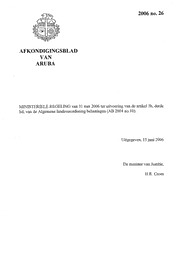
Afkondigingsblad van Aruba 2006 no. 26
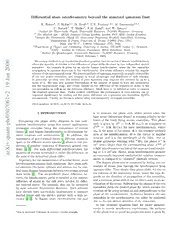
Differential atom interferometry beyond the standard quantum limit
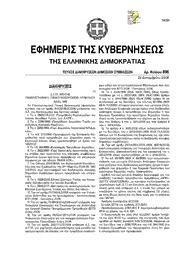
Greek Government Gazette: Part 7, 2006 no. 896

bölüm 1: gi̇ri̇ş

bölüm 12

The Winds of Chance by Rex Beach

Brief Couples Therapy Homework Planner (PracticePlanners)

Glencoe Literature: Reading With Purpose, Course 3

Bakke: Defining the Strict Scrutiny Test for Affirmative Action Policies Aimed at Achieving Diversity
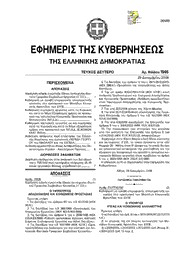
Greek Government Gazette: Part 2, 2006 no. 1946

Weapon injury report

The American Revolution and The Boer War by Sydney G Fisher
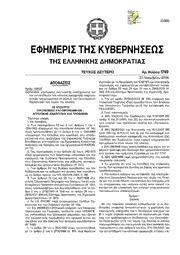
Greek Government Gazette: Part 2, 2006 no. 1749

Best easy day hikes, Austin
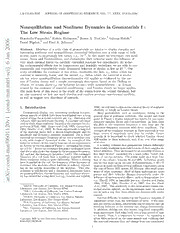
Nonequilibrium and Nonlinear Dynamics in Geomaterials I : The Low Strain Regime
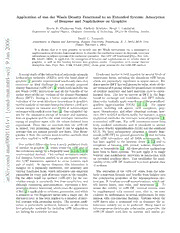
Application of van der Waals Density Functional to an Extended System: Adsorption of Benzene and Naphthalene on Graphite

Laser Doppler and phase Doppler measurement techniques

Punyahavachanam

